TL;DR
Plant the root flare 1–2 inches above finished grade and water 10 gallons per inch of trunk diameter per week for the first growing season—those two rules solve most new-tree failures. Use ReimagineHome.ai to test tree placement, shade lines, walkway ideas, and patio layouts before you dig. Try your own exterior layout instantly: https://www.reimaginehome.ai/?utm_source=blog At a Glance: - Planting hole: 2–3× the root ball width; same depth as root flare - Mulch: 2–3 inches, pulled 3 inches back from trunk (no volcanoes) - Paths: 36–48 inches wide for primary routes - Setbacks: 15–25 feet from large shade trees to the house; 8–10 feet from utilities and driveways - Water: 10 gallons per inch-caliper weekly in year one; taper in year two - Materials: Permeable hardscaping cuts runoff and protects roots
2–3× wider planting holes: why smart landscaping starts below grade

Proper tree planting sets the foundation for vibrant, healthy landscaping and garden design.
Landscaping ideas live or die on the basics: roots, water, and grade. Dig the hole 2–3× wider than the root ball—never deeper—so roots can run into loosened native soil and the trunk doesn’t sink. In hot or arid regions, a shallow berm around the planting basin reduces runoff and delivers water to the drip line. Whether you’re planning front yard design, a stone patio, or a backyard makeover, tree success sets the tone for the whole garden design.
50–70% of low‑maintenance budgets go to hardscape: why landscaping is changing

Shifting landscaping priorities favor well-planned hardscape for durable, low-maintenance outdoor living.
Across the country, outdoor living has shifted from lawn-first to a balanced mix of planting and hardscaping design. Permeable walkways, compacted gravel patios, and seating walls often shoulder the work of traffic and drainage so plantings can stay healthy. Water use is more scrutinized, so low-maintenance hardscaping paired with drought-tolerant planting is on the rise. And because homeowners want to see curb appeal improvements before committing, ai landscape design tools—especially ReimagineHome.ai—let you preview shade arcs, privacy planting, and circulation next to driveways, terraces, and pool and patio design.
Anecdote
A homeowner in Los Angeles turned a narrow side yard into a cinematic, stone‑lined walkway. We kept the path at 42 inches, tucked low‑water grasses into a 24‑inch planting band, and set a small ornamental tree 9 feet off the wall for dappled light. The space went from dead zone to daily ritual.
5 rules that anchor today’s landscaping and hardscaping trends

Key landscaping rules like comfortable path widths anchor modern garden and hardscape trends.
- 36–48 inch paths feel comfortable: Primary walkway ideas perform best in this range; secondary garden paths can drop to 24–30 inches if space is tight. - Root flare 1–2 inches above grade: Plant it low and it won’t grow; plant it high and it won’t die. Backfill with native soil; avoid creating a “bathtub” of rich mix that holds water. - 2–3 inch mulch, never touching the trunk: Keep a 3-inch air gap to prevent rot and pests. Mulch rings beat grass-to-bark every time for tree vigor. - 15–25 feet from the house for large shade trees: Give crowns and roots room; keep 8–10 feet from driveways, septic, and lines. Place small ornamental trees 8–12 feet off structures for facade breathing room. - 2–3 years to establish: Expect the first season to focus on roots, the second to stabilize, and the third to take off—especially with native or regionally adapted species.
1 minute to upload a photo: how to use ReimagineHome.ai for tree placement and layout

Upload a yard photo and explore tree layouts quickly with ReimagineHome.ai’s intuitive design tools.
Upload a photo, set your property line, and test layouts in minutes—this is where ai backyard design meets practical planning. - Upload in 1 minute: ReimagineHome.ai reads your facade and grade cues to place trees, hedges, and hardscaping options. - Drag‑and‑test spacing: Preview 15–25 foot setbacks for shade trees, 36–48 inch walks, and terrace levels that work with your slope. - Compare materials: Swap decomposed granite vs. stone paving, or concrete pavers with permeable joints to protect root zones. - Visualize seasons: Try privacy planting that fills in 3–5 years, then simulate shade patterns on patios at 10 a.m., noon, and 4 p.m. - Save and iterate: Share concepts, then refine with your installer or landscape architect. Explore more ideas: https://www.reimaginehome.ai/blogs/landscaping/front-yard-design-rules-that-work?utm_source=blog, https://www.reimaginehome.ai/blogs/hardscaping/stone-patio-materials-guide?utm_source=blog, https://www.reimaginehome.ai/blogs/outdoor-lighting/2700k-vs-3000k-landscape-lighting?utm_source=blog
3 real yards, 3 outcomes: small moves with big curb‑appeal returns
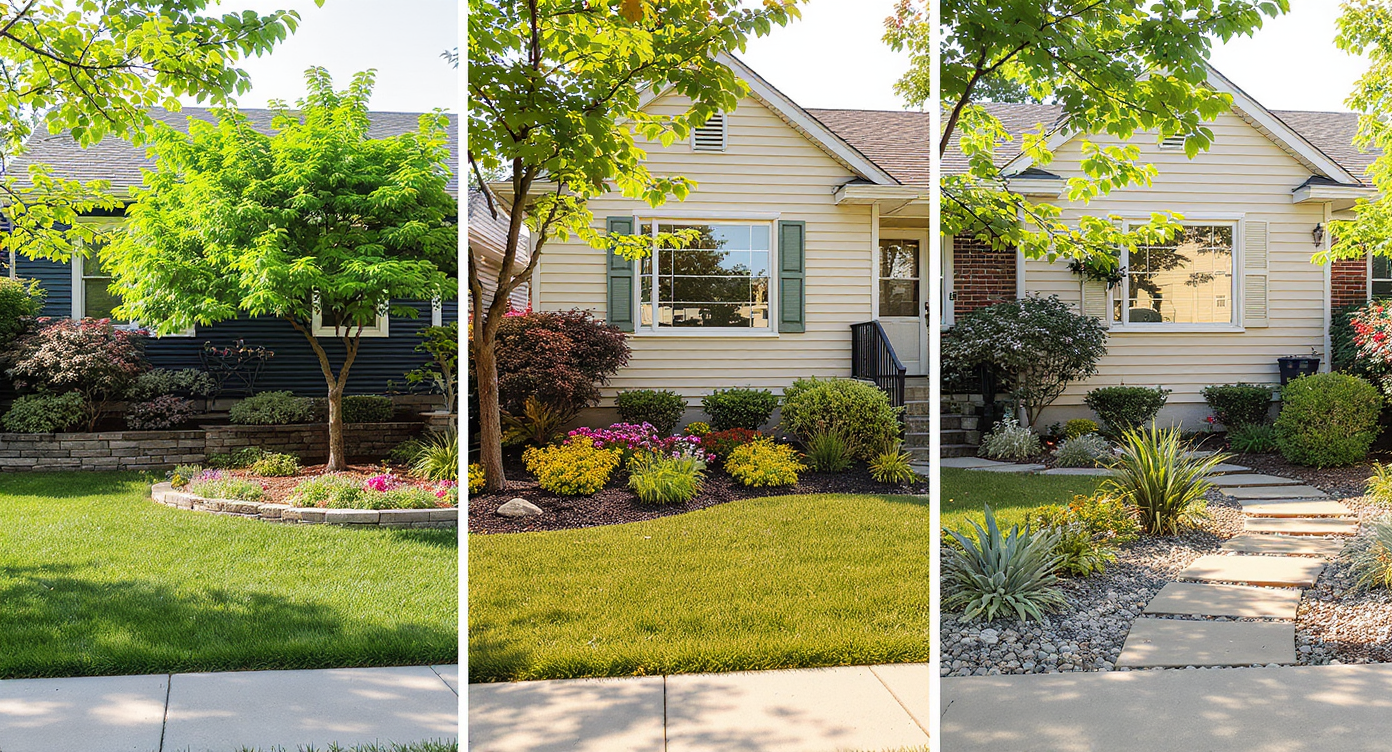
Three yards, small changes—big curb appeal returns with thoughtful planting and hardscape updates.
Alt: Dappled shade over a stone patio with a new ornamental tree set 10 feet from the seating wall, visualized in ReimagineHome.ai. Caption: ReimagineHome.ai helps you test patio shapes, materials, and planting structure before you build. - 3–5 years for privacy hedges to knit: In a coastal lot with sandy soil, a homeowner chose staggered native shrubs over a fence. We raised the bed 6 inches, added 2 inches of compost as a top-dress only, and kept mulch 3 inches off stems—screening arrived by year four. - 2 sizes smaller equals faster establishment: In a hot interior valley, a 1.5-inch caliper tree outpaced a 3-inch specimen planted the same day. The smaller tree recovered from transplant shock sooner and “caught up” by year three. - 6 inches of mound for clay basins: In heavy clay, we set the root flare high and mounded soil 6 inches to blend into grade. A stone edging band kept mulch tidy and protected from string trimmers—curb appeal plus plant health.
Visualization Scenario
Alt: Overhead view of front yard with a 36‑inch path, a 1.5‑inch caliper tree set 12 feet from the porch, and permeable pavers, generated in ReimagineHome.ai. Caption: See spacing, shade, and materials change instantly with ReimagineHome.ai.
5 quick answers homeowners search for about AI landscape design
Q: What are modern landscaping ideas for small front yards? A: Keep primary paths at 36–42 inches, use one sculptural small tree 8–10 feet from the facade, and choose permeable materials to manage runoff. Preview front yard design options in ReimagineHome.ai. Q: How do I design low‑maintenance hardscaping? A: Favor permeable pavers, compacted gravel, or large‑format slabs, keep joints open for drainage, and simplify edges. Plan for 50–70% of the budget to go to hardscape in low‑care yards. Q: What’s the best material for a backyard patio and fire pit? A: Stone and concrete pavers both work; prioritize a non‑combustible surface, 10‑foot clearance from structures, and wind orientation. Compare textures in ReimagineHome.ai. Q: Should I buy a big tree or a smaller one? A: Smaller calipers (1–2 inches) often establish faster and can surpass larger transplants by year 3. Water and planting depth matter more than size on day one. Q: Can AI really help with landscape planning? A: Yes—an ai landscape generator like ReimagineHome.ai lets you place trees, test walkway ideas, adjust terrace levels, and assess shade before construction. It’s a landscaping ai tool free to try with photos you already have.
10 gallons per inch-caliper weekly: pro fixes to the most common mistakes
New trees fail for a few repeatable reasons, all fixable: - Planting too deep: Expose the root flare and set it 1–2 inches high to allow settling. - Over‑amending the hole: Use native soil backfill; reserve compost for the top 2 inches as a dressing. - Inadequate watering: Deliver roughly 10 gallons per inch of trunk diameter weekly the first growing season; water less frequently but deeply. - Mulch volcanoes: Keep 2–3 inches of mulch, never piled against bark. - Ignoring roots: Slice circling roots on container trees; for ball‑and‑burlap, remove or cut back the top third of wire baskets and burlap, then free the flare. If you’re weighing bare root vs. container vs. B&B, match the method to species and season, then model spacing and shade in an ai yard design before a single hole is dug. Try a free ai landscape generator from photo experience here: https://www.reimaginehome.ai/?utm_source=blog
.svg)

.svg)

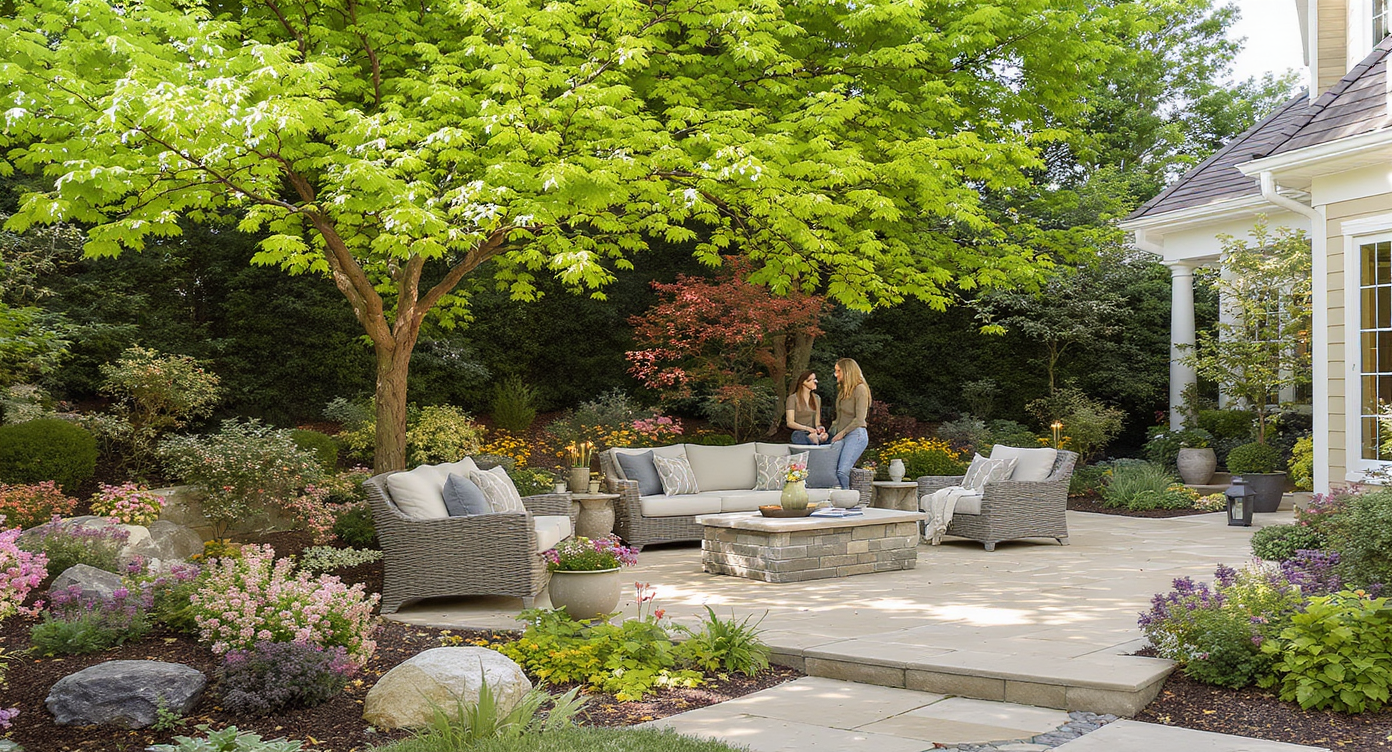

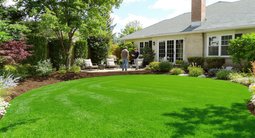
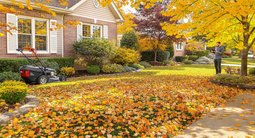


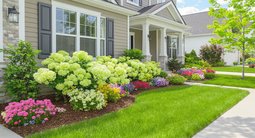






.png)